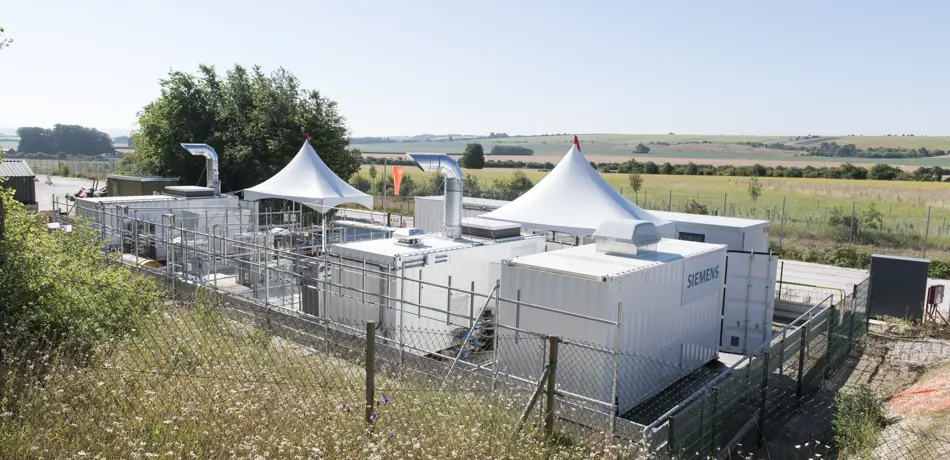Oxford Green Ammonia Technology Group Projects

Project approved: Pathways to the decarbonisation of shipping via green ammonia
The Agile Initiative at the Oxford Martin School has been established with funding from the Natural Environment Research Council to provide rapid solutions to critical environmental issues. It will deliver high-impact interdisciplinary research and contribute urgently-needed answers to inform environmental policy.
Fast-paced research ‘Sprints’ will respond to specific questions, identified in partnership with policymakers and key stakeholders across the UK, typically within 12 months, so evidence can feed into the policy cycle in real-time. Among the first ‘Sprints’, is research into how best to scale up nature-based solutions to climate change in the UK; store CO2 beneath our coastal seas; and transition to the use of non-fossil fuels for international shipping.
Sprint Four: Pathways to the decarbonisation of shipping via green ammonia
There is a consensus that green ammonia will be the most suitable zero-carbon marine fuel for long-distance shipping as it offers a favourable balance between heating value, energy density, and cost of storage. It is, however, highly uncertain how shipping will transition away from fossil fuels. This project will provide answers based on the coupling of the economics of ammonia production with an understanding of shipping routes and political intent, such as national SDGs. The wider impacts on employment, land, and water use in the up-scaling of green ammonia production will also be considered. The research team combines a unique aggregation of expertise in green ammonia production and distribution, port infrastructure planning, net-zero shipping, and economic analysis.
Experts in green ammonia production, shipping and transport infrastructure planning, climate mitigation and economic analysis from the University of Oxford (Department of Engineering Science, the Smith School of Enterprise and the Environment, and the Environmental Change Institute), the Climate Change Committee, Lloyd’s Register, Ørsted and the Ammonia Energy Association will work on this Sprint.

Workshop completed: India's Green Ammonia Opportunity
The Oxford Green Ammonia TEchnology (OXGATE) research group and the Council on Energy, Environment and Water (CEEW) jointly organised an online workshop on the 9th-11th November 2020 on "India’s Green Ammonia Opportunity". Over 100 international attendees from industry, academia and civil society engaged with 20 expert speakers and panellists on driving the deployment of green ammonia production and use in India. The workshop was funded by GCRF India-Oxford Initiative - ODA Thematic Workshops. The objectives of the workshop were to:
- Inform stakeholders of recent green ammonia developments relevant to India.
- Build a consortium / collaboration for the implementation of green ammonia in India.
- Produce a report to be presented to the Govt of India and relevant ministries to inform stakeholders and to propose next steps, such as the development of a green ammonia roadmap.

Green Ammonia: Production and Use in India
The team was awarded a GCRF grant to investigate green ammonia production and use for fertiliser and energy in the specific context of India. India is currently the world’s second largest producer of ammonia and boasts some of the cheapest renewable energy in the world. In this GCRF awarded project, the team will improve our green ammonia modelling capability. Additionally, a workshop took place online in November 2020 to share results and foster future collaboration with local and international stakeholders.

Photocatalytic Green Ammonia Production
The team was awarded a grant for a proof of concept study using photocatalysts to turn sunshine, water, and air directly into ammonia. This technology may be useful for producing ammonia in rural locations that require ammonia for fertiliser. The current work involves scaling the technology from lab-bench catalysts to a prototype device.

Collaboration in shipping THRUST project
Within this project, the team will assess potential technology pathways for decarbonising the shipping industry through a shift to zero and/or neutral-carbon technologies, based on renewable energy sources and using novel heterogeneous catalysts. The team is partnering with THRUST to find optimal green fuel and catalyst combinations for maritime applications.

Green Ammonia Demonstrator
Rutherford Appleton Laboratory, Oxfordshire, UK
The world’s first round-trip ‘green’ ammonia pilot plant was commissioned in June 2018 at Rutherford Appleton Laboratory as a £1.5M Innovate UK collaboration between Siemens, University of Oxford, STFC, and Cardiff University. Research includes managing variable renewable energy in the Haber-Bosch process and experimenting with novel low pressure and/or low temperature catalysts.

